As tulips come in a wide array of colors and varieties, planting tulip bulbs can add a burst of color and beauty to your garden. Tulips thrive in well-drained soil and can bloom for about 1 to 3 weeks in the spring. It requires minimal attention once planted so that these versatile flowers are relatively easy to grow, care, and maintain.
If you are looking to cultivate tulip bulbs, you are in the right spot. In this article, you’ll learn the best time to plant tulip bulbs, the key steps to grow tulip bulbs, as well as some faqs from tulip bulbs growers.
Table of Contents
Can You Plant Tulip Bulbs in the Spring?
YES, you can plant tulip bulbs in the spring but they are best to be planted in the fall. The spring-planted tulips may not flower as robustly or may bloom later than those planted in the fall. If you choose to plant them in spring, ensure that the bulbs are healthy and firm, and plant them as soon as the ground is workable, ideally before the weather gets too warm. Keep in mind that tulips thrive best with a period of cold dormancy, so spring planting might result in less vibrant blooms or even foliage without flowers in their first year.
When to Plant the Tulip Bulbs?
The best time to plant tulip bulbs is in fall, ideally around late September to early November, before the ground freezes. Planting at this time allows the bulbs to establish roots before the winter sets in, leading to beautiful blooms in the spring. The exact timing can vary depending on your climate zone, but planting tulip bulbs in the fall ensures they receive the necessary cold period for proper plant growth and flowering.
Does Tulips Have to Be in a Warm Environment?
Tulips thrive in a cool-to-cold environment and need winter chill to bloom effectively in spring. They prefer full sun and well-drained soil, as wet conditions can lead to bulb rot. The ideal growing conditions include regions with dry, warm summers and cool winters, which are typically found in USDA zones 3 to 8. In warmer climates, tulips may need to be treated as annuals and pre-chilled before planting to ensure successful blooming. Therefore, while they do not need a consistently warm environment, they do require specific temperature conditions for optimal growth and flowering.
How to Plant Tulips Plants?
Normally, it takes 6 to 10 weeks from planting tulips to bloom. After planting, it usually takes 1 to 3 weeks for the bulbs to sprout and emerge from the soil. Once the tulips start to grow, they will generally bloom within another 4 to 6 weeks as they develop flower buds and eventually open into vibrant flowers.
Find a Place to Plant Tulips
Tulips thrive in locations with full to partial sun exposure. Choose a spot in your garden that receives at least 6 hours of sunlight per day. If you fail to get enough sunshine and light in autumn and winter, you can use LED grow lights as an alternative. Additionally, ensure the soil is well-drained to prevent waterlogging, as tulip bulbs are susceptible to rot in soggy conditions. Select a planting area with good air circulation to help prevent fungal diseases. Avoid planting tulips in low-lying or waterlogged areas to promote healthy growth and vibrant blooms.
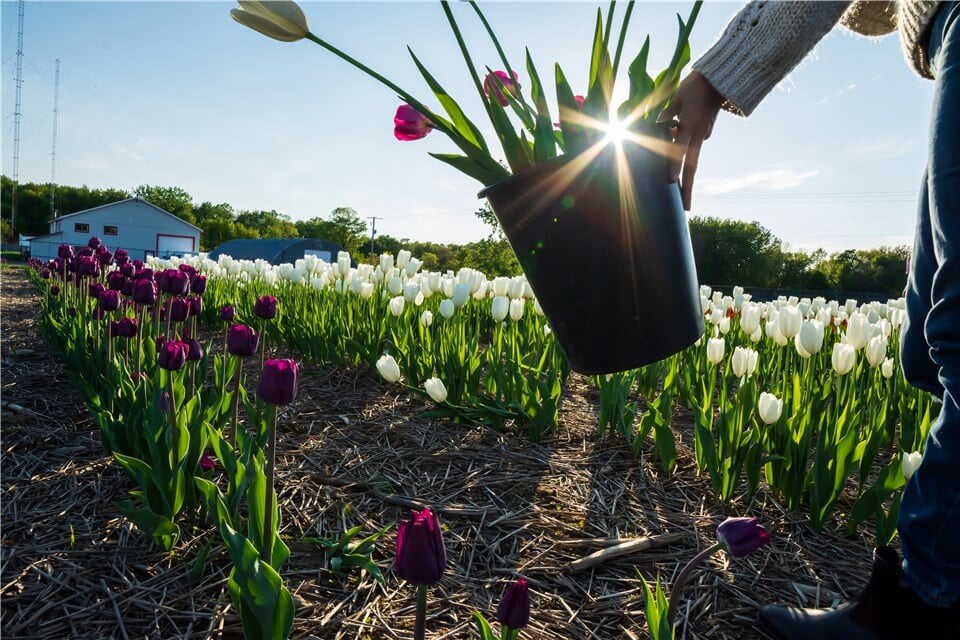
Tulips Full to Sun Exposure
Prepare the Soil
Loosen the soil to a depth of about 12 inches and mix in some organic matter, such as compost, to enhance drainage and prevent from nutrient deficiency.
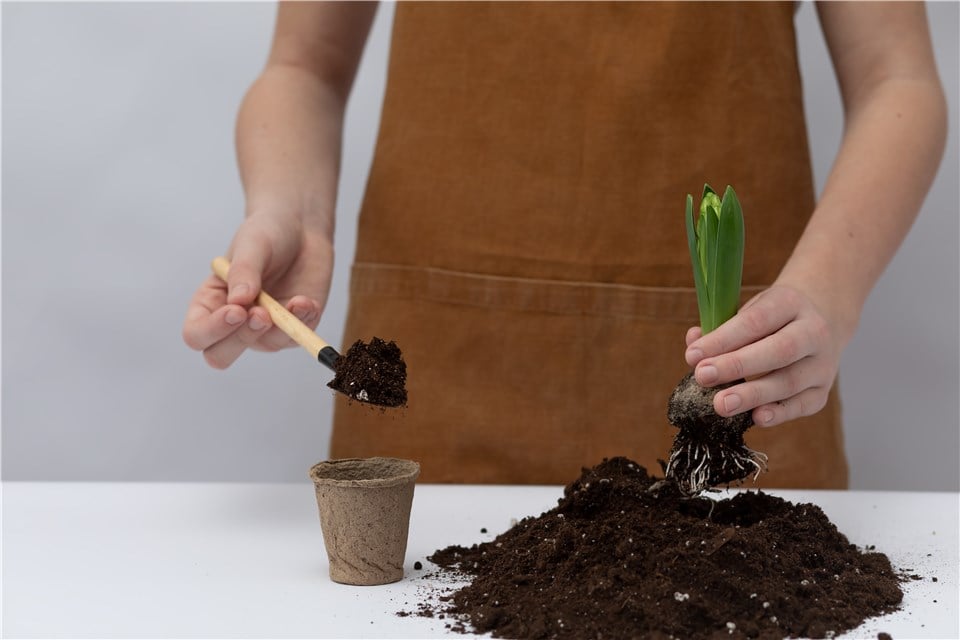
Prepare the Soil for Tulips
Planting Depth and Spacing
Plant the tulip bulbs at a depth of about 6 to 8 inches (15 to 20 centimeters) in well-drained soil. The general rule of thumb is to plant bulbs at a depth that is roughly three times their diameter. Place the bulbs with the pointed end facing up, spacing them 4 to 6 inches apart for a fuller display. This depth provides adequate insulation and protection for the bulbs during winter months while allowing them to establish roots and grow properly.
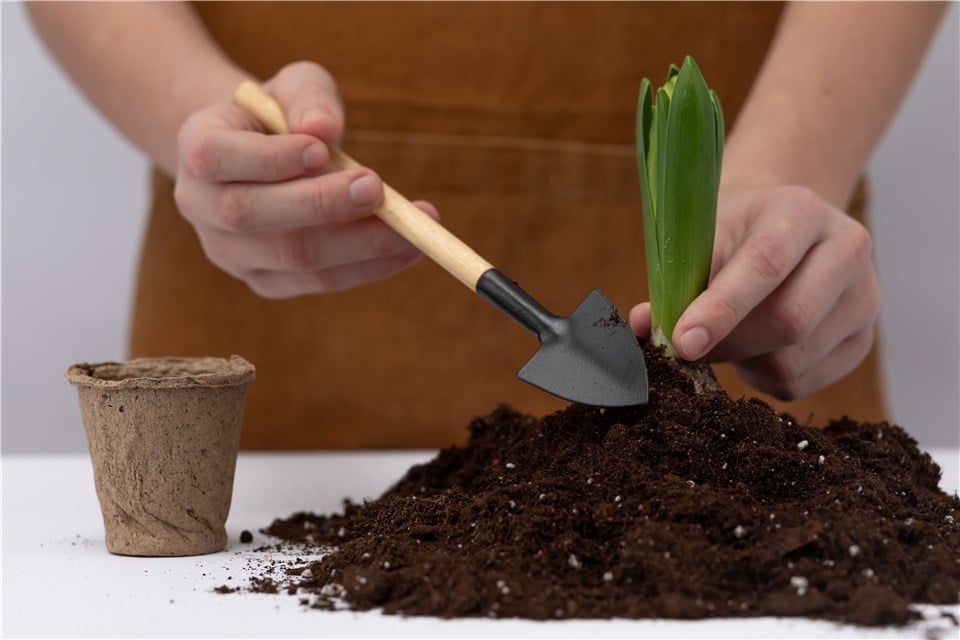
Planting Depth and Spacing
Water Tulip Bulbs
Tulips require moderate watering, especially during their active growth and blooming periods. It’s essential to keep the soil evenly moist but not waterlogged. Water the tulips when the top inch of soil feels dry to the touch, typically providing around 1 inch of water per week, including rainfall. Adjust watering frequency based on weather conditions; tulips may need more water during hot, dry spells and less during cooler, wetter periods. Overwatering can lead to bulb rot, so it's crucial to strike a balance and ensure proper drainage to help the tulips thrive.
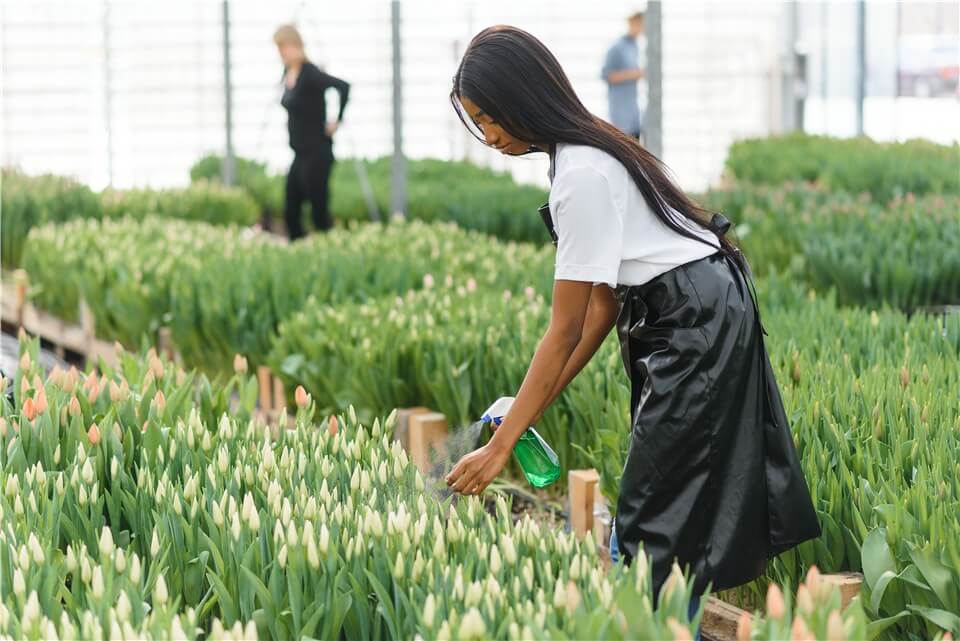
Water Tulip Bulbs
Weed Suppression in Tulips
To ensure the health and beauty of tulip beds, weed suppression in tulips is crucial. Mulching is a popular technique that involves applying organic materials like wood chips or shredded leaves around tulip plants to block sunlight and prevent weed seed germination. Regular hand weeding is also essential to remove any weeds that may appear without disturbing the tulip bulbs. Additionally, using weed barriers or landscape fabric can help inhibit weed growth while allowing necessary nutrients to reach the soil. For more persistent weed issues, pre-emergent herbicides designed for bulb plants like tulips can be used to prevent weed seeds from sprouting.
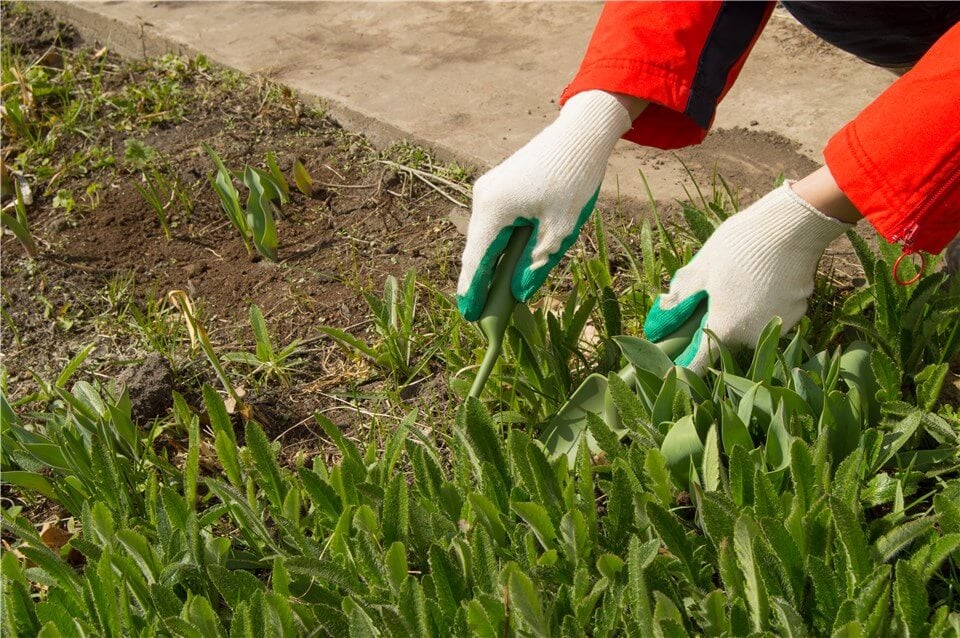
Weed Suppression in Tulips
Post-Planting Care
Finally, you may ask what to do with tulip bulbs after blooming. After tulips have finished blooming, it is important to deadhead the spent flowers to redirect the plant's energy back into the bulb. Allow the foliage to wither and turn yellow naturally, as it helps with photosynthesis and energy storage. Reduce watering as the foliage dies back, and consider lifting and storing the bulbs in regions with hot summers for replanting in the fall. By following these steps, you can ensure healthy bulbs and vibrant blooms in the next growing season.
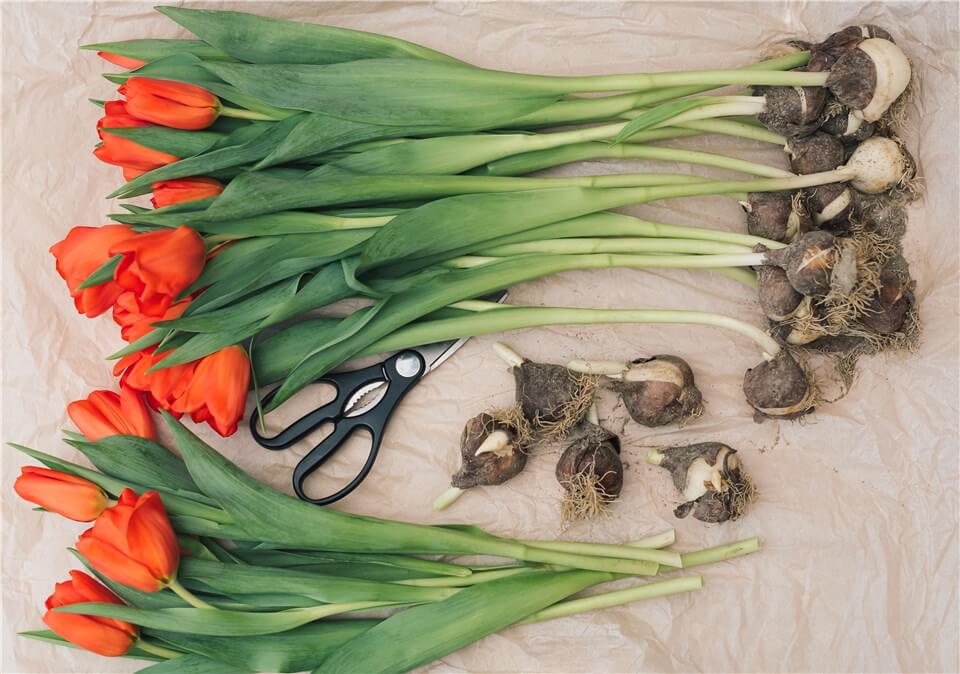
Post-Planting Care for Tulips
How to Replant Tulips?
You can replant tulip bulbs when your tulips finish blooming. To replant tulips, first of all, select a suitable location with well-drained soil and full to partial sun exposure. After the tulips have finished blooming and the foliage has withered, carefully dig up the bulbs, taking care not to damage them. Remove any remaining foliage and debris from the bulbs.
Replant the bulbs at a depth of about 6 to 8 inches (15 to 20 centimeters), spacing them several inches apart. Ensure the pointed end of the bulb faces upward. Water the newly planted bulbs thoroughly and continue to monitor soil moisture as they establish themselves. With proper care and maintenance, your replanted tulips should bloom beautifully in the following season.
FAQs About Tulip Bulbs
Planting tulip bulbs can be a rewarding experience, as they yield vibrant blooms in the spring. The following FAQs can help you have a better understanding of tulip bulbs.
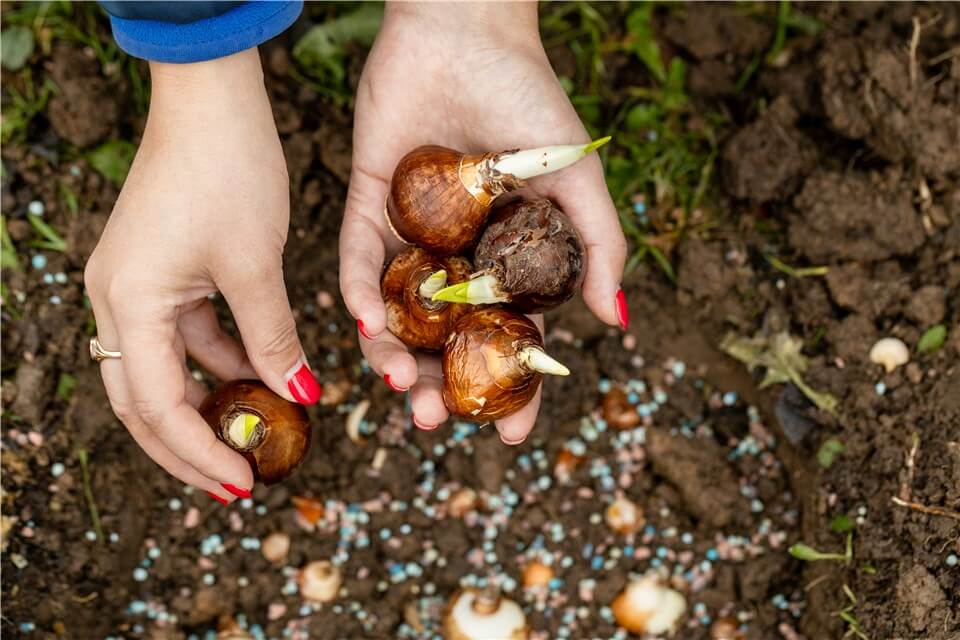
FAQs About Tulip Bulbs
Are tulips perennials?
Tulips are perennial plants, which means they can regrow and bloom for multiple years under the right conditions. However, in some regions, especially where summers are hot, tulips may not return reliably year after year. This is because tulips require a cold period to bloom successfully, and in warmer climates, they may not receive the necessary chilling hours. In such cases, gardeners often treat tulips as annuals, replanting new bulbs each year for consistent blooms. With proper care and suitable growing conditions, tulips can behave as perennials in many gardens, providing beautiful displays season after season.
How long do tulips last?
Tulips typically bloom for about 1 to 3 weeks, depending on the variety and environmental conditions. Factors such as temperature, sunlight exposure, and moisture levels can influence the duration of the blooming period. After blooming, the flowers gradually fade, and the plant focuses on seed production. While the bloom period is relatively short, the foliage continues to photosynthesize and store energy in the bulb for the following year's growth and flowering. Proper care after blooming can help extend the life of the tulip plant and promote future blooms.
Do tulips come back every year?
Whether tulips come back every year depends on various factors such as climate, soil conditions, and care. In regions with cold winters and cool springs, tulips are more likely to return annually as perennials, blooming year after year. However, in warmer climates or areas with mild winters, tulips may not naturalize well and may need to be treated as annuals, replanting new bulbs each year for consistent blooms. To encourage tulips to return reliably, it's essential to provide the bulbs with the right growing conditions, including well-drained soil, adequate sunlight, and proper care after blooming.
How many tulips per bulb?
The number of tulips that grow from a single bulb can vary depending on the specific variety of tulip and its size. Generally, a tulip bulb produces one flowering stem with a single bloom. However, some larger bulbs or certain tulip varieties can produce multiple stems with multiple blooms. Factors such as bulb size, growing conditions, and the health of the bulb can also influence the number of flowers that emerge from a single tulip bulb.
How to preserve tulip bulbs?
To preserve tulip bulbs for future planting, allow the foliage to wither naturally after blooming, then carefully dig up the bulbs, clean off excess soil, and let them dry in a shaded, well-ventilated area for a few days. Store the bulbs in a cool, dry place with good air circulation, checking them periodically for firmness and signs of mold or rot. Properly stored tulip bulbs can be replanted in the next season for continued blooms.
How often do tulips bloom?
Tulips typically bloom once a year, usually in the spring. The exact timing of the bloom can vary depending on the specific variety of tulip, local climate conditions, and when the bulbs were planted. In most cases, tulips bloom for a period of about 1 to 3 weeks, showcasing their colorful flowers before the petals begin to fade and the plant focuses on seed production. After blooming, the foliage continues to photosynthesize and store energy in the bulb for the following year's growth and flowering.




























